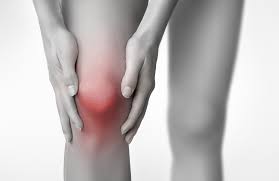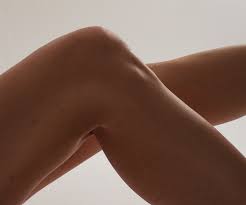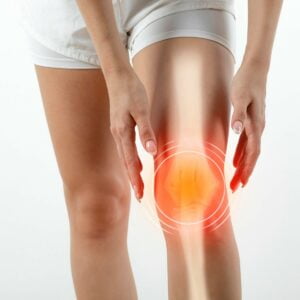Medial knee pain can be an unwelcome guest that disrupts your daily activities and limits your mobility. This discomfort, localized to the inner side of your knee joint, can stem from a variety of causes. In this comprehensive guide, we’ll explore the world of medial knee pain – from its causes and diagnosis to treatment options and prevention strategies.
Contents
Understanding Medial Knee Pain

Before diving into treatment options, it’s crucial to understand the anatomy of the knee joint. The knee consists of several components, including bones, ligaments, tendons, and cartilage.
Medial knee pain specifically targets the inner side of the knee joint, often resulting from issues with the medial meniscus, the medial collateral ligament (MCL), or the surrounding structures.
Common Signs of Medial Knee Pain
Medial knee pain refers to pain that is felt on the inner side of the knee joint. This type of pain can be caused by various underlying conditions. Here are some common signs and symptoms associated with medial knee pain:
- Pain on the Inner Side: The most obvious sign is the presence of pain on the inner (medial) aspect of the knee joint. This pain can range from mild discomfort to sharp, intense pain.
- Swelling: Swelling around the medial aspect of the knee can often accompany medial knee pain. This swelling may be due to inflammation, injury, or underlying conditions.
- Stiffness: Stiffness in the knee joint, especially on the inner side, can make it difficult to bend or straighten the knee fully. This can be particularly noticeable after periods of rest or in the morning.
- Pain with Movement: Medial knee pain is typically aggravated by specific movements. Activities such as walking, going up or down stairs, squatting, or getting up from a seated position may trigger or exacerbate the pain.
- Instability: Some individuals with medial knee pain may experience a feeling of instability in the knee joint. This sensation might make you feel as though your knee is giving way or not providing proper support.
- Clicking or Popping: In cases of meniscus tears or other structural issues, you might hear clicking, popping, or crunching sounds when you move your knee.
- Pain during Physical Activity: Medial knee pain often becomes more pronounced during physical activities or exercises that involve bending, twisting, or loading the knee joint.
- Pain while Resting: While medial knee pain typically worsens with movement, it can also cause discomfort when you’re at rest, especially if the underlying condition has progressed or if there’s inflammation.
Common Causes of Medial Knee Pain

Medial knee pain can be caused by a variety of factors, ranging from overuse to structural issues. Here are some common causes of medial knee pain:
Degenerative Joint Conditions
One of the primary culprits behind medial knee pain is degenerative joint conditions, such as osteoarthritis. This wear-and-tear form of arthritis gradually erodes the protective cartilage within the knee joint, leading to pain, stiffness, and reduced mobility.
Medial Meniscus Tears
Medial meniscus tears can cause sharp, localized pain on the inner side of the knee. These tears are often the result of sudden twisting or impact, and they can severely impact knee function if left untreated.
Medial Collateral Ligament (MCL) Injuries
The MCL plays a crucial role in stabilizing the knee joint. Injuries to this ligament can result from direct impact, often seen in contact sports, leading to pain and potential instability.
Osteoarthritis
Osteoarthritis can take a toll on the inner knee joint, causing pain, inflammation, and limited range of motion. As the cartilage breaks down, bones can rub against each other, exacerbating discomfort.
Overuse and Muscle Imbalances
Engaging in repetitive activities or improper movement patterns can strain the knee joint, causing medial pain. Muscle imbalances around the knee can also contribute to misalignment and discomfort.
Obesity’s Impact on Medial Knee Pain
Excess body weight places additional stress on the knee joint, accelerating wear and tear. Obesity is often linked to the development and exacerbation of medial knee pain.
Diagnosing Medial Knee Pain
When it comes to diagnosing medial knee pain, the expertise of a medical professional is invaluable. They will assess your medical history, perform a physical examination, and recommend diagnostic tests to pinpoint the exact cause of your discomfort.
Consulting a Medical Professional
If you’re experiencing persistent or worsening medial knee pain, seeking medical attention is crucial. A healthcare provider will evaluate your symptoms, and medical history, and perform a thorough physical examination to identify potential underlying issues.
Imaging Techniques
Diagnostic imaging plays a pivotal role in uncovering the root cause of your knee pain. X-rays provide a detailed view of the bones, highlighting signs of arthritis or fractures. MRIs delve deeper, revealing soft tissue injuries like ligament tears or cartilage damage. Ultrasound can also offer real-time insights into the knee’s condition.
Medial Knee Pain Treatment Options

Managing medial knee pain involves a multifaceted approach, tailored to the specific cause and severity of your discomfort.
Conservative Approaches
Rest, Ice, Compression, Elevation (RICE)
Immediate pain relief can often be achieved through the RICE technique. Rest allows the injured tissues to heal, while ice reduces inflammation. Compression minimizes swelling, and elevating the leg helps improve blood circulation.
Physical Therapy Exercises
Physical therapy is a cornerstone of knee pain management. Your therapist will design a customized exercise regimen to strengthen the muscles supporting the knee joint and improve flexibility. These exercises can alleviate pain and enhance joint stability.
Pain-Relief Medications and Topical Treatments
Over-the-counter pain medications, such as nonsteroidal anti-inflammatory drugs (NSAIDs), can help manage discomfort and reduce inflammation. Topical treatments like creams or patches provide localized relief and minimize the need for oral medication.
Medical Interventions
Corticosteroid Injections
For acute inflammation, corticosteroid injections can provide rapid relief. These injections target the affected area with anti-inflammatory medication, reducing pain and swelling.
Platelet-Rich Plasma (PRP) Therapy
PRP therapy involves injecting concentrated platelets from your blood into the affected area. These platelets contain growth factors that promote healing and tissue regeneration.
Surgical Solutions
When conservative treatments fall short, surgical interventions may become necessary.
Arthroscopic Surgery for Meniscus Tears
Arthroscopic surgery is a minimally invasive procedure that repairs or trims damaged meniscus tissue. This approach promotes quicker recovery and minimizes scarring.
Ligament Reconstruction for Severe MCL Injuries
In cases of severe MCL injuries, surgical reconstruction may be recommended. This involves using grafts to replace or repair the damaged ligament, restoring stability to the knee joint.
Lifestyle Modifications
Making certain lifestyle changes can significantly contribute to alleviating and preventing medial knee pain.
Maintaining a Healthy Weight
Maintaining a healthy weight can lessen the load on your knee joint, reducing stress and slowing down the progression of degenerative conditions.
Choosing Appropriate Footwear
Wearing supportive footwear that cushions the impact on your knee joints can make a noticeable difference in pain reduction. Choose shoes with proper arch support and shock absorption.
Low-Impact Exercises and Activities
Engaging in low-impact exercises such as swimming, cycling, and yoga can help maintain joint flexibility and strengthen the surrounding muscles without subjecting the knee to excessive stress.
Preventing Medial Knee Pain
Preventing medial knee pain involves a combination of strengthening exercises, proper biomechanics, and lifestyle adjustments. Medial knee pain is often associated with issues like patellofemoral pain syndrome, medial meniscus injuries, and medial collateral ligament strains. Here are some tips to help prevent medial knee pain:
- Proper Footwear: Wear appropriate footwear for your activity, especially if it involves running or other high-impact exercises. Well-fitted shoes with proper arch support and cushioning can help reduce stress on the knees.
- Maintain a Healthy Weight: Excess body weight places additional strain on your knees. Maintaining a healthy weight through a balanced diet and regular exercise can help alleviate stress on the knee joint.
- Strengthen Quadriceps and Hip Muscles: Strong quadriceps and hip muscles can help stabilize the knee joint and reduce the risk of knee pain. Include exercises like squats, lunges, leg presses, and hip abduction exercises in your workout routine.
- Stretch and Warm-Up: Before exercise, warm up with dynamic stretches to increase blood flow to the muscles and improve flexibility. Static stretches after exercise can help maintain muscle length and joint flexibility.
- Balanced Exercise Routine: Avoid overloading your knees with excessive high-impact activities. Incorporate a variety of exercises, including low-impact options like swimming and cycling, to reduce strain on the knees.
- Proper Technique: Whether you’re engaging in sports or strength training, using proper technique is crucial to prevent unnecessary stress on the knee joint. Consider working with a coach or fitness professional to ensure your form is correct.
- Gradual Progression: If you’re new to exercise or trying a new activity, gradually increase the intensity and duration to give your body time to adapt.
- Cross-Train: Mix different types of exercises to avoid overuse of the same muscle groups and reduce the risk of repetitive strain injuries.
- Maintain Flexibility: Incorporate flexibility exercises such as yoga or regular stretching to maintain proper joint mobility.
Physical Therapy and Rehabilitation
Physical therapy is a critical component of the recovery process.
Role of Physical Therapy
A skilled physical therapist guides you through exercises and stretches that enhance joint mobility, reduce pain, and improve overall strength and stability.
Sample Exercises and Stretches
- Quad Sets: These help build quadriceps strength, a key supporter of the knee joint.
- Hamstring Stretches: Stretching the hamstrings can alleviate tension on the knee.
- Straight Leg Raises: This exercise targets the quadriceps and helps with knee stabilization.
Holistic Approaches to Manage Pain

Beyond medical interventions, holistic approaches can contribute to managing medial knee pain.
Nutrition and Supplementation
Consuming foods rich in anti-inflammatory nutrients, such as omega-3 fatty acids, can aid in reducing inflammation. Supplements like glucosamine and chondroitin may also support joint health.
Mind-Body Techniques
Mindfulness meditation and relaxation techniques can help manage pain perception and promote a sense of well-being.
Acupuncture and Chiropractic Care
Alternative therapies like acupuncture and chiropractic care can provide relief by targeting pressure points and realigning the body.
Conclusion
Understanding, addressing, and effectively managing medial knee pain requires a comprehensive approach. By adopting a combination of conservative treatments, medical interventions, lifestyle modifications, and holistic strategies, you can regain control over your knee health and enjoy a better quality of life.
If you’re experiencing Knee pain, physical therapy for knee pain at PhysioMantra can help: Book an online physical therapy session.



